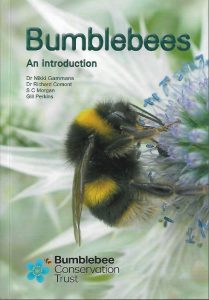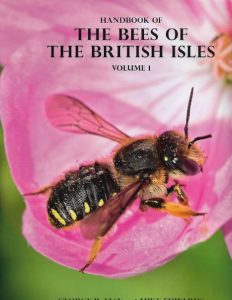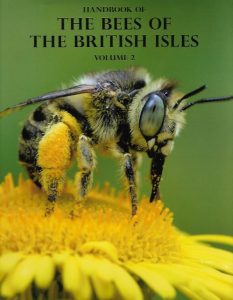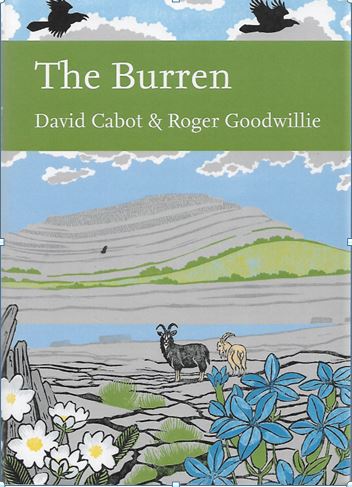
‘Garden Birds’ by Mike Toms, 2019. Collins New Naturalist’s Series. London, Collins. No.140. 444pp
Mike Toms wrote ‘Owls’, number 125 in the New Naturalist’s Series books, and he has now followed this with ‘Garden Birds’. Toms is now head of communications at the BTO, author of a number of other books, a columnist on the Eastern Daily Press, a Trustee of the Norfolk Wildlife Trust and has overseen the BTO’s Garden Ecology Team, all of which makes him hugely qualified to bring this book together. The book has seven chapters, the largest being a species by species account of garden birds (the ‘Species Accounts’) which comprises some 124pp. Each species is given a calendar wheel which shows its presence through the year and a map showing its UK distribution. All the data which supports this comes from The BTO Garden Birdwatch, alongside key facts and a general discussion about its presence in the garden and behaviour. The book is not just UK-centric, but it draws on research data from Europe, N. America and down under. The early chapters are on food, feeding, nest boxes, opportunities, behaviour, people and gardens. It is generously illustrated throughout with colour photographs, each with informative and generous captions. There is just one single reference to ‘climate change’ in the index recounting how the time of breeding has been influenced – brought forward earlier than a few decades ago, and effects on arrival and departure dates of UK migrants, however this has not resulted in increased breeding success. There is a very good section on diseases of birds, with for instance maps showing how Paridae Pox expanded from its start in SE England to more than 50% of England by 2010. Other insights, facts and figures in this fascinating book, are i) the minimum of 4.3 million nest boxes available for birds in the UK, ii) the story of tits and milk bottles which started as a noted behaviour in the 1940s and finished in the 1980s, iii) that cats now kill an estimated 25-29 million of birds a year in the UK, and iv) the very complicated social system of the Dunnock is explained. As for feeding birds, one researcher found that in New Zealand the equivalent of five million loaves of bread are put out in gardens every year. As a straightforward, comprehensive and reliable book on garden birds it has succeeded. It is complete with References, Species and General Index, but has no glossary. It is ideal for all birders and naturalists.
The Burren, by David Cabot and Roger Goodwillie. Collins New Naturalist Series. 2019 No. 138 464 pp.
A long-awaited title in the New Naturalist Series, this tome on the unique habitat in Ireland and Britain, confirms all that amateur and professional naturalists hold in awe of the magical habitat – ‘a jewel in the ecological crown of Ireland.’ Nestled on the coast of County Clare and sprayed by the Atlantic foam the limestone rocks have gentians only elsewhere found at altitude in the Pyrenees or Alps. The authors, David Cabot is an Irish naturalist and all-round ecologist, teamed up with Roger Goodwillie essentially a botanist specialising in woodland ecology and fungi have produced a worthy book of twelve chapters that detail how the Burren was worn down and eroded by the ice ages, how and when it was explored by naturalists, and the impact of man on the habitat. The most fascinating parts are the descriptions of the limestone pavements, with its clints and grikes and glacial erratics, the calcareous grassland, the woodlands and the turloughs and extensive caves. There is a very strong botanical bias in the book, when we learn there are 90 species of dandelion in the Burren, or the wide range of orchids, or diminutive hazel trees, ferns and fungi. The wildlife – the birds, local butterflies and other insects are woven into the different chapters making this a good read for any reader who has never visited, or wishes to visit. There is a sense that the Burren is under threat of impact from tourism and change in land use and plant succession. That some areas have now been designated as SPAs and SAC by the EU will mean that management plans will have to be tailored to avoiding impact in these areas and in The Burren National Park. There is an Index, General Index and Species Index and References. A superb book.

Bumblebees, An Introduction. By Nikki Gammans, Richard Comont, S.C. Morgan and Gill Perkins. Bumblebee Conservation Trust. 2018. 174pp.
Edited by four bumblebee experts, this is a major work from eight contributors including the editors. Put together by the Bumblebee Conservation Trust (BCT) it does what ‘it says on the tin’, it is a great introduction, possibly the best introduction to these appealing insects for the general public. The book is extensively illustrated in colour throughout, including the works of 18 photographers including those of entomologist Steven Falk. This book presents a bewildering array of imagery that maps all the finer points of bumblebee biology that make identification easier. The book has seven chapters: introduction, pollination, decline, gardens, collecting, ‘the big seven’ (buff-tailed, white-tailed, red-tailed, common carder, early, tree and heath) and the major chapter on Identification. Bumblebees are here classified into four groups, red tails, ginger tails, yellow tails and cuckoo bees, a refreshing classification that departs from earlier books, but very effect. Each of the 24 extant species of bumblebee (three have already gone extinct) is clearly shown as colour bar diagrams of body bands, photographs in the wild showing particular characteristics (noted and shown on the photographs), life cycle through the months and a distribution map. This is a very exciting compilation and will be a great success for BCT. The book will be thumbed through by eager entomologists, hymenopterists and amateur naturalists – it is small enough to go into a field jacket or knapsack for identification and it has a glossary, index and further information.
Handbook of The Bees of The British Isles by George R. Else and Mike Edwards. Published by The Ray Society, 2018. Two Volumes. Vol.1: 332pp Vol.2:776pp. £137.50


This has to be the bee book of the century. It will not be surpassed for decades. It is written by two experts who have put several decades of dedicated work on these hymenoptera into the book. George Else, who I originally met in the virgin rainforests of Sulawesi in 1985 on Project Wallace, worked at The Natural History Museum in London as curator of bees and certain aculeate wasps, until he retired in 2007. Mike Edwards was originally at Leeds University and helped to set up BWARS (Bees, Wasps and Ants Recording Society), latterly running his own ecological consultancy. The germ of this book was realised by George Else who has a great debt of gratitude for Mike Edwards becoming co-author of these mighty tomes. Many entomologists and hymenopterists are acknowledged for inputting their information, data, diagrams and photographs, and on the latter Paul Brock is mentioned as the ‘all round entomologist…and outstanding insect photographer’ who has supplied many of the photographs. And they are excellent. The aim of the book was to photograph all bee species in the UK in the wild, which was achieved, save for the two only known from museum specimens: Halictus subauratus and Bombus pomorium. On their count there are 277 species of bee species have been recorded from the British Isles. Of those 171 are known from the Channel Islands, including 11 species that are unknown in the mainland of Britain. George’s original idea was not to include any photographs which would have been a bad idea. All the photographs are included on a handy CD. Volume 1 includes information on recognition of bees, how to photograph them, where to find them and identification of pollen loads. After the comprehensive keys to bee genera the book launches into the systematic review of all species, with maps, that flows over into Volume 2. The photographs throughout are excellent for identification purposes but it is not likely that the amateur entomologist or naturalist will ever pay the £137.50 for these wonderful books. Only serious bee enthusiasts will.


